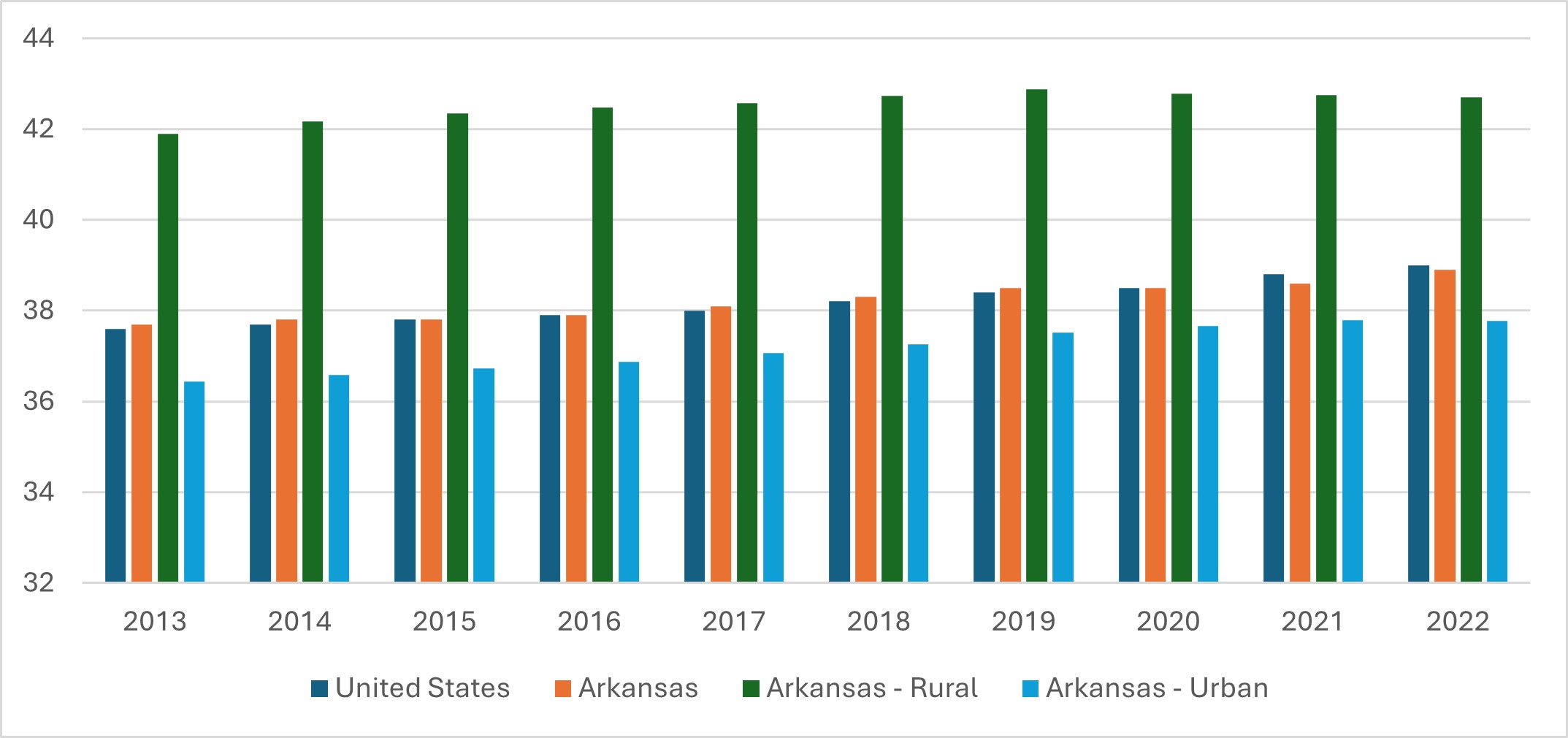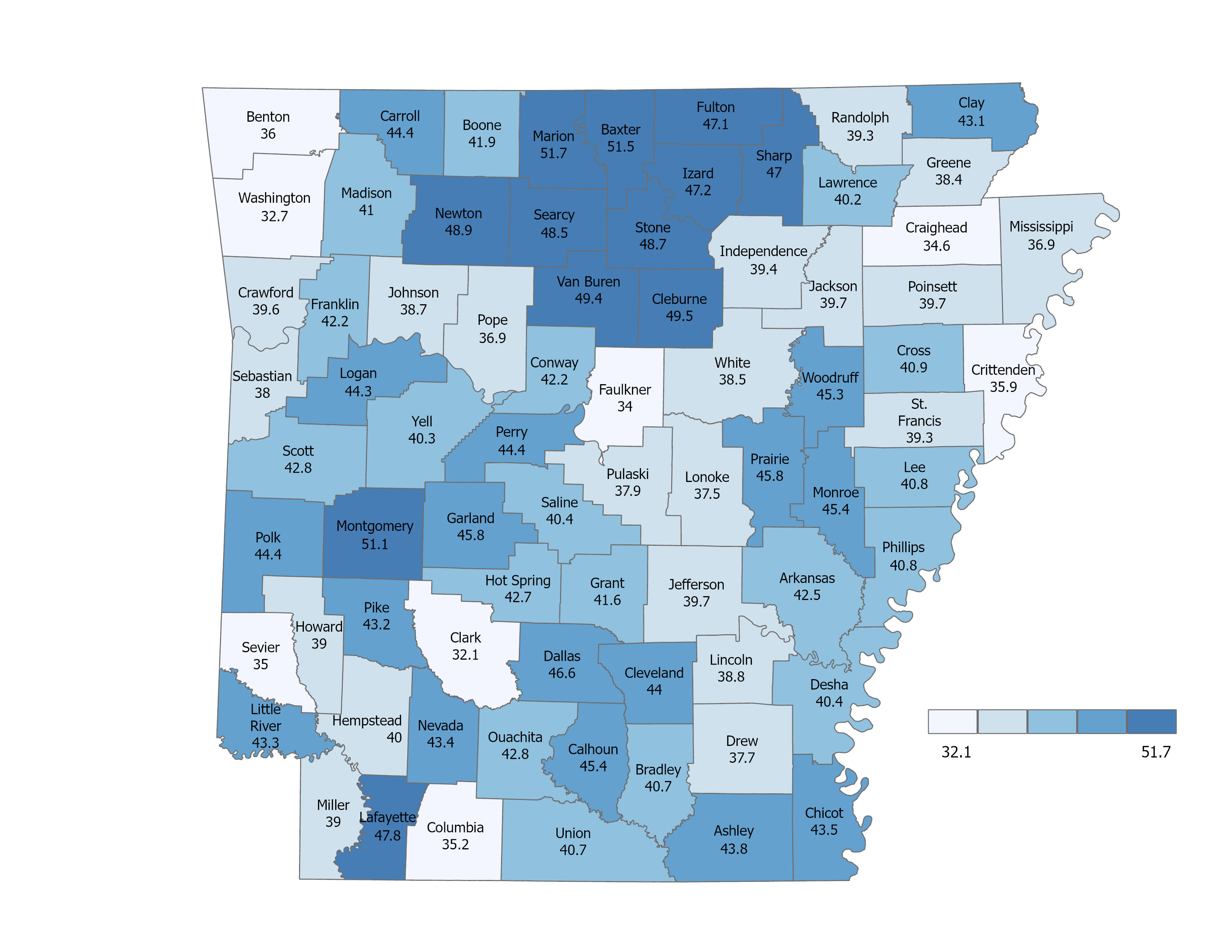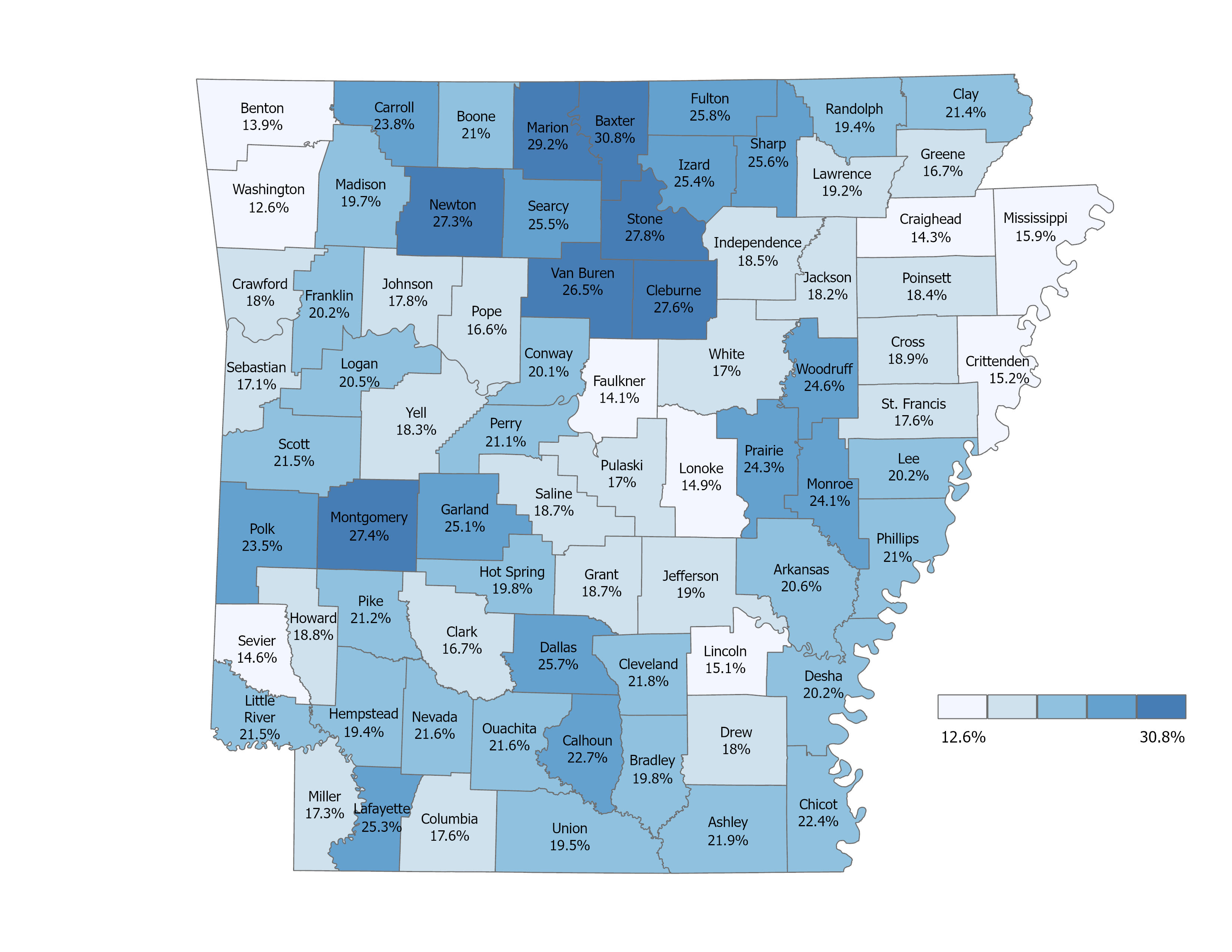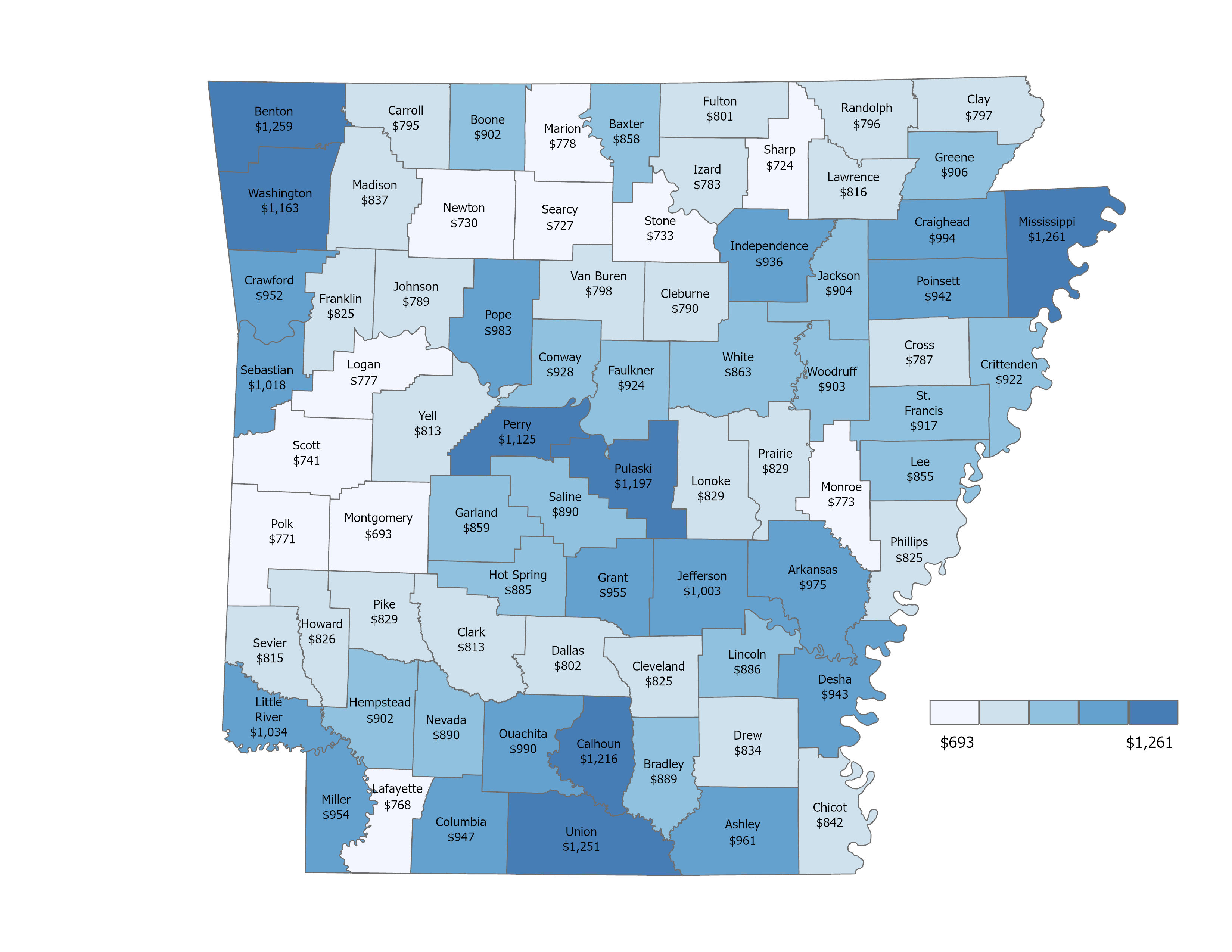Posts
Contact
Stacey McCullough
Assistant Director-CPED
Phone: 501-671-2078
Email: smccullough@uada.edu
University of Arkansas System Division of Agriculture
Cooperative Extension Service
2301 S. University Avenue
Little Rock, AR 72204
Arkansas' Age Gap Should Shape New Policy Challenges
Big Median Age Gap: Rural 42.7 vs. Urban 37.8
The 2025 Rural Profile of Arkansas highlights how variations in age demographics across the state demand tailored community development strategies. In 2022, Arkansas’ median age was 38.9, closely aligning with the national median of 39.0, with both showing modest increases since 2013 (Figure 1). However, the data also indicates that the significant age gap between rural and other areas has become more pronounced over time. For example, while county median ages in Arkansas ranged from 32.1 in Clark County to 51.7 in Marion County, rural regions reported a notably higher median age (42.7) compared to urban regions (37.8). In addition, the state median age map shows clear clusters of older populations in the mid-north counties (Figure 2). This pattern and the significant age gap between rural and urban areas call for balanced community development strategies across regions.
Figure 1. Median Age, 2013 to 2022
Source: 2025 Rural Profile of Arkansas, University of Arkansas Division of Agriculture
Note: Urban counties include Benton, Craighead, Crawford, Crittenden, Faulkner, Garland,
Jefferson, Lonoke, Miller, Pulaski, Saline, Sebastian, and Washington. All other counties
are considered rural
Figure 2. Median Age, 2022
 Source: 2025 Rural Profile of Arkansas, University of Arkansas Division of Agriculture
Source: 2025 Rural Profile of Arkansas, University of Arkansas Division of Agriculture
Supporting Communities Through Data-Informed Local Planning
Community development strategies should be tailored to each region to effectively meet unique local needs. This is especially crucial because demographic differences shape the challenges communities face. Urban areas often prioritize education, workforce development, and programs for young families, while rural communities tend to need better access to healthcare, senior services, and transportation infrastructure.
To respond to these varying priorities, community programs should be guided by local demographic data. Tools like the Rural Profile of Arkansas can help local governments and organizations develop region-specific initiatives that reflect each area’s age structure. For example, rural areas with older populations may benefit from enhanced senior services, health outreach, and social activities, while urban areas with younger populations might focus on youth engagement, childcare, and career development. Aligning programs with local demographics ensures Arkansas can more effectively serve its diverse communities.
Can We Just Leave Rural Communities as They Are?
It's also important to consider strategies that help "even out" the age distribution across counties to support Arkansas' overall economic development. If these age gaps solidify, it could increase social polarization between aging rural areas and other regions of the state, threatening Arkansas' long-term growth. For example, counties with older populations already tend to have lower median incomes, highlighting the link between age and economic opportunity (Figures 3 & 4). Without proactive efforts to attract and retain younger residents in rural communities, Arkansas' long-term growth is at risk.
Figure 3. Percentage of the Population Aged 65 and Over, 2022 Source: 2025 Rural Profile of Arkansas, University of Arkansas Division of Agriculture
Source: 2025 Rural Profile of Arkansas, University of Arkansas Division of Agriculture
Figure 4. Average Weekly Wages by County in Arkansas, Fourth Quarter 2022 (U.S. Average
= $1,385) Source: 2025 Rural Profile of Arkansas, University of Arkansas Division of Agriculture
Source: 2025 Rural Profile of Arkansas, University of Arkansas Division of Agriculture
Reference
Seo, F., & Goodman, M. (2025). 2025 Rural Profile of Arkansas. University of Arkansas System Division of Agriculture.